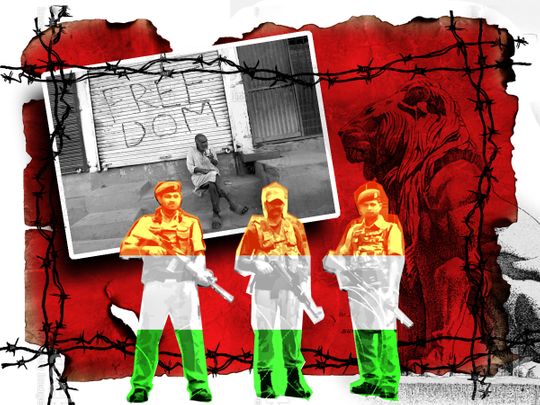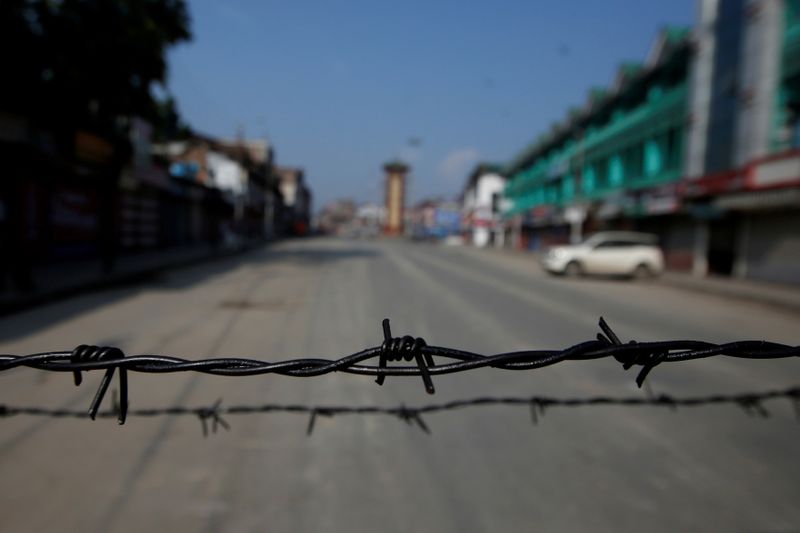
Trapped in lockdown, barbed wires and military barricades, an eerie silence continues to define Jammu and Kashmir’s landscape, one year after it lost its special status.
As the official project of erasure of its geography, politics, symbols and memory continues, the Modi government labours to equate silence with ‘normality’ and ‘acceptance’.
Stories of trauma, sufferings, helplessness and monumental despair largely remain hidden from the gaze. But, rarely do memories of atrocity get buried forever. They continue to feed and fuel the volcano.
The sense of loss in Kashmir was more than symbolic as Article 370, the constitutional statute, struck off on August 5, 2019, guaranteed its residents protections with respect to jobs, admissions in higher educational institutions and ownership of land.
Whether tensions and Kashmir’s unrest within are sustained at a manageable level for now, New Delhi, aggressive after the ephemeral pleasure of breaking the forbidden lock, will be left with burnt fingers and remain in constant firefighting mode
By removing that safety valve, the Modi government found the levers to unilaterally amend or strike off any law without consulting the people. That process started with monumental speed in pursuit of altering the demography of J&K, which till a year ago was the only Muslim majority state in India, but now stands demoted and divided into two union territories.
Prospects of demographic flooding
The prospects of demographic flooding are locally engendering fears of the current dispensation in New Delhi replicating the Israeli model to subjugate the Muslims, while the rest become collateral damage. Kashmir may, however, shape differently from West Bank. And, not because Kashmir’s calm can be confused for reconciliation.
The present calm essentially stems from use of excessive and novel means of repression including inducement of psychological terror. The absence of civil liberties, anxieties of demographic change and a feeling of impotence could gradually inspire a rebellion.

The early signs are already visible. Though the officials maintain that militancy is being decimated and several top rebel leaders have been killed (among 120 militants in the first half of 2020), many continue to wield the gun. The number could well be on the rise.
Several rebel fighters killed recently were fresh recruits. A slow but steady trickle of young men are disappearing from their homes, before they are discovered to have joined militant ranks. For the security officials this is not so worrying as long as the numbers are sustained through well-oiled intelligence networks and successful encounters, also because home-grown militants with little or no training and weapons do not pose a major challenge.
Sense of humiliation
Yet, an explosion beyond the sustainable limit is a possibility as the sense of humiliation, anger and loss deepens. Worse, if infiltration of arms, men and material from across the border steps-up, even a low-key war coupled with the locally accumulated anger can begin to chalk a dangerous course.
Kashmir’s historical conflict is not only internal but also a territorial one, with Pakistan controlling one-third of the territory and China occupying a portion. In 1990s, Pakistan had capitalised on the existing resentment in Kashmir to heavily fund and train armed guerrillas.
Security experts are worried about increasing infiltrations and the early signs of home-grown militancy turning radicalised. Unlike recent years, since the abrogation of Article 370, militants have targeted many civilians (primarily outsiders and those connected with mainstream politics).
Fragile situation
Additionally, India’s borders both with Pakistan and China are becoming extremely fragile. Ever since the BJP has been in power, constant border hostilities have replaced bilateral negotiations with Pakistan. In May-June this year, China’s Army devoured 60 square kilometres of the erstwhile state’s territory and killed 20 Indian soldiers in a barbaric hand to hand combat.
Even as the process of retreat has started for easing tensions, China is unwilling to completely budge. One of the compelling reasons for China’s offensive move was last year’s Kashmir action that it sees as strategically challenging. China and Pakistan are close allies and their armies enjoy some level of inter-operability which adds to Indian vulnerability.
None of the stakeholders is likely to step up the ante but border tensions are likely to assume a permanent quality. The US-China trade offensive and India’s tilt towards US can complicate the issue and potentially turn a regional conflict into one of geo-strategic interests. All it would take is one reckless move within the region or one that is inspired by world leaders.

Prolonged lockdown in Kashmir, brazen violation of human rights with poor legal remedies have already tarred India’s image. In several Congressional hearings and resolutions in US, UK and Europe, Modi’s handling of Kashmir has been castigated.
The global tectonic shifts, however, are less guided by moral questions and more inspired by strategic and economic goals. Kashmir’s volcanic situation provides fertile ground for both.
Whether tensions and Kashmir’s unrest within are sustained at a manageable level for now, New Delhi, aggressive after the ephemeral pleasure of breaking the forbidden lock, will be left with burnt fingers and remain in constant firefighting mode.
Anuradha Bhasin Jamwal is a prominent journalist and the executive editor of Kashmir Times







